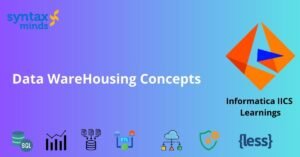In recent times, the field of data analysis has witnessed a significant metamorphosis with the emergence of advanced logical tools and ways. One similar tool that has revolutionized the way data is anatomized and interpreted is the pandas library. originally developed by Wes McKinney in 2008, pandas has come a pivotal element in the logical assiduity due to its versatility and effectiveness in handling large datasets. This essay explores the impact of pandas on the logical assiduity, pressing its elaboration, advantages, operations, and unborn prospects.

Data analysis has always been an integral part of decision- making processes in colorful disciplines, including business, exploration, and academia. Traditionally, data judges reckoned on homemade styles and introductory statistical tools to reuse and dissect data. still, with the exponential growth of data in the digital age, there arose a need for further sophisticated and effective tools to handle complex datasets. This is where pandas made its mark by furnishing a important and stoner-friendly library that simplifies data manipulation, disquisition, and analysis. One of the crucial advantages of using pandas is its effectiveness in data manipulation.
The library offers a wide range of functions and styles that allow judges to perform colorful operations similar as filtering, sorting, grouping, and adding up data with ease. Pandas’ intuitive syntax and data structures, similar as DataFrames and Series, make it easy for druggies to reuse and transfigure data snappily and effectively. This effectiveness plays a pivotal part in accelerating the data analysis process and enabling judges to decide precious perceptivity from the data in a timely manner. In addition to effectiveness, pandas also offers inflexibility in data handling, allowing judges to work with different types of data formats and structures.
Whether it’s handling missing data, reshaping datasets, or incorporating multiple datasets, pandas provides a comprehensive set of tools that feed to different data analysis conditions. also, pandas’ flawless integration with other logical tools and libraries, similar as NumPy, Matplotlib, and Scikit- learn, enhances its functionality and enables judges to perform end- to- end data analysis and modeling tasks within a single terrain.
The operations of pandas in the logical assiduity are vast and varied. Data disquisition and cleaning are among the primary tasks that judges perform using pandas, where they can identify patterns, outliers, and inconsistencies in the data. Pandas’ erected- in functions for data visualization farther aid in presenting the results of data analysis in a clear and terse manner, easing better communication and decision- timber. also, pandas is considerably used in data modeling and machine literacy tasks, where judges can make prophetic models, perform statistical analysis, and estimate the performance of algorithms using real- world data.
The impact of pandas on businesses and exploration associations has been profound, leading to bettered decision- making processes, enhanced productivity and effectiveness, and accelerated exploration and invention. By enabling judges to reuse and dissect data more effectively, pandas allows associations to gain precious perceptivity into client geste, request trends, and business performance, therefore guiding strategic decision- making and maximizing functional effectiveness.
In exploration settings, pandas facilitates data- driven discoveries and advancements in colorful disciplines, ranging from healthcare and biotechnology to social lores and environmental studies. Despite its multitudinous advantages, pandas isn’t without its challenges and limitations. For newcomers, the literacy wind associated with pandas can be steep, taking time and trouble to master the library’s functionalities and stylish practices. likewise, pandas may face performance issues when handling extremely large datasets, impacting the speed and effectiveness of data processing. comity issues with certain systems and surroundings also pose challenges for druggies looking to integrate pandas into their being logical workflows.
Looking ahead, the unborn prospects of pandas in the logical assiduity are promising, with ongoing developments and advancements that aim to address being challenges and expand the library’s capabilities. nonstop sweats to ameliorate pandas’ performance, usability, and comity will be pivotal in icing its applicability and relinquishment in the ever- evolving geography of data analysis. also, emphasis on training and education enterprise to upskill judges and experimenters in pandas operation will further consolidate its position as a leading logical tool in the assiduity.
In conclusion, the impact of pandas on the logical assiduity has been substantial, reshaping the way data is anatomized, interpreted, and employed for decision- making purposes. Its effectiveness, inflexibility, and different operations have propelled pandas to the van of data analysis tools, enabling associations and experimenters to prize meaningful perceptivity from data and drive invention across colorful disciplines. As pandas continues to evolve and expand its capabilities, its part in shaping the future of data analysis is set to grow, offering endless possibilities for advancing logical practices and driving data- driven decision- making processes.




